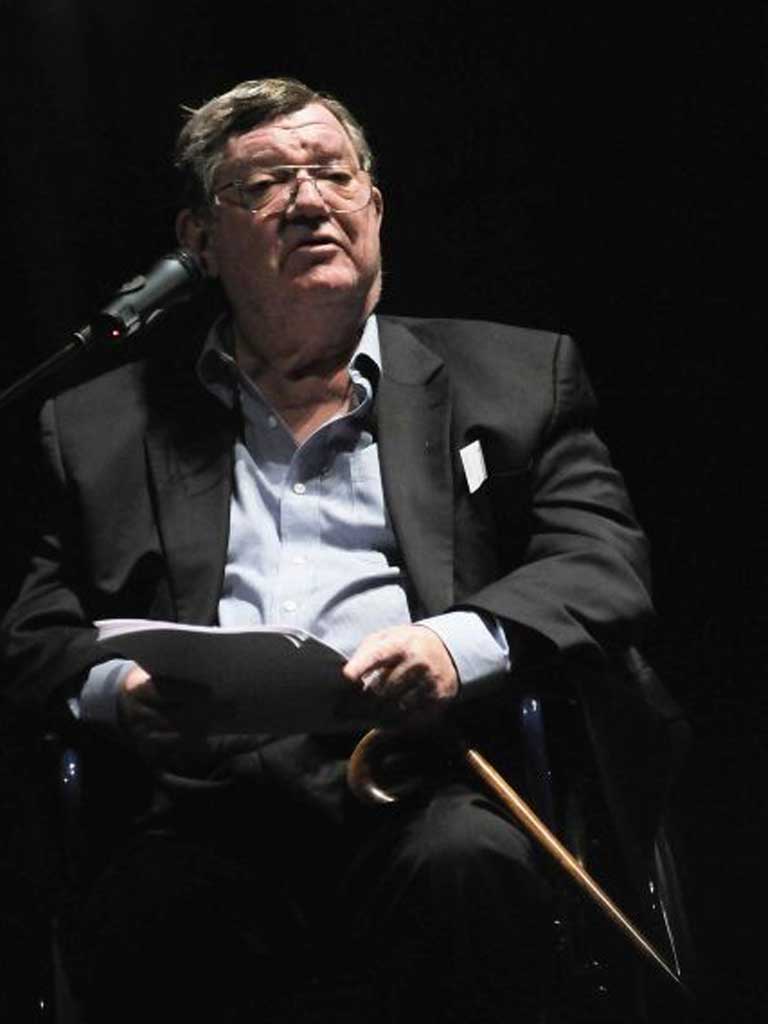Robert Hughes: Forthright critic who transformed the public perception of modern art

Robert Hughes' documentary masterwork, The Shock of the New, was first broadcast on television in 1980 as an eight-part series. In his forthright and inimicable style, Hughes brought the history of modern art to the public eye in a way that had not been done before and which has not been bettered. The compelling series, and the accompanying book, have since become essential references on the subject.
Hughes was born in Sydney in 1938, one of four children. His father, Geoffrey Hughes, was a lawyer and prominent figure in the city, who died when Robert was young. He recalled in his memoir, "Though Dad died when I was 12, to some extent he continued to rule me from the grave, as you might imagine."
After two years of studying art, then architecture, at Sydney University, he dropped out and took to drawing cartoons for the Sydney Observer and painting. When the journal's editor, Donald Home, sacked its art critic, Hughes – aged 20 – fell into the role by accident. He later observed wrily, "Australia in 1958 was the only place in the world where someone as ignorant as I could have conducted his basic art training in public without being laughed off stage."
By the early 1960s he was being advised to emigrate to further his career. His friend, the writer Alan Moorehead, counseled, "If you stay here another 10 years, Australia will still be a very interesting place. But you will have become a bore, a village explainer." So he headed for Europe, staying briefly at Moorehead's Tuscany home, and settled in London in 1965. Here he worked for The Sunday Times and the underground satirical magazine Oz.
Five years later, the Time editor, Henry Grunwald, read Hughes' book Heaven and Hell in Western Art (1968) and was impressed how the book helped readers to appreciate art, without the usual pomposity and jargon. He invited Hughes to New York to become the magazine's art critic, a position he held for three decades.
The Shock of the New (1980) showed Hughes in his prime. The TV series covered a century of developments in modern art, from the influence of mechanisation, through conflicts between authority and art, and traced movements such as Surrealism and Expressionism. The Guardian named the book of the series as one of its "100 greatest non-fiction books" last year.
Beyond many works on the world of art, Hughes also tackled the settlement of Australia in The Fatal Shore (1987), documenting the life of convicts in the 18th and 19th century penal colonies. While writing a follow-up to the book, in 1999, he was involved in a car collision. The accident – and the subsequent legal case – hit him hard.
Further trauma came three years later when his son Danton, a sculptor, committed suicide. Hughes said in his memoir, "I miss Danton and always will, although we had been miserably estranged for years and the pain of his loss has been somewhat blunted by the passage of time."
Hughes revisited the subject of his earlier documentary in The New Shock of the New in 2004, again for television. During the filming, Damien Hirst controversially refused Hughes' crew permission to film his works on show at the Tate. Hughes told David Lister in this newspaper that Hirst's spokesman told him: "Damien is very fragile to criticism". Summarising his feelings at the time, Hughes wrote, "The art world is now so swollen with currency and the vanity of inflated reputation that it is taking on some of the less creditable aspects of showbiz."
This direct and sometimes abrasive style would often put him at odds with the art establishment and his home country. However, as his friend Clive James noted in a review of his memoir, "Hughes is the Bastard from the Bush dressed up as the Wandering Scholar... All he has to remember is that his nation has got some credit coming for helping to form the best part of his brain, the part that wants to share any discovered joy."
His last major work was Rome: A Cultural, Visual and Personal History (2011), in which he wrote of the city he had first visited and fallen in love with 50 years before. Simon Schama, said of the book: "...histories of Rome have been a dime a dozen. But there is only one Robert Hughes – only one writer, it's safe to say, who would describe the ancient city as 'Calcutta on the Mediterranean' and then convince you of the rightness of that vision..."
In his memoir Things I Didn't Know (2006), Hughes explained his motivation for the autobiography and for all his writing projects: "I realized that my main impulse for writing a book was to force myself to find out about things I didn't know. It has always been like that; the reason for this memoir is the same, to excavate and bring into the light things I had forgotten or repressed, along with the stuff that remained at the front of my awareness. Otherwise, why do it at all?"
Robert Studley Forrest Hughes, writer and art critic: born Sydney 28 July 1938; married 1967 Danne Everson (divorced 1981; one son, deceased); 1981 Victoria Whistler (divorced 1996); 2001 Doris Downes; died New York 6 August 2012.
Join our commenting forum
Join thought-provoking conversations, follow other Independent readers and see their replies
Comments